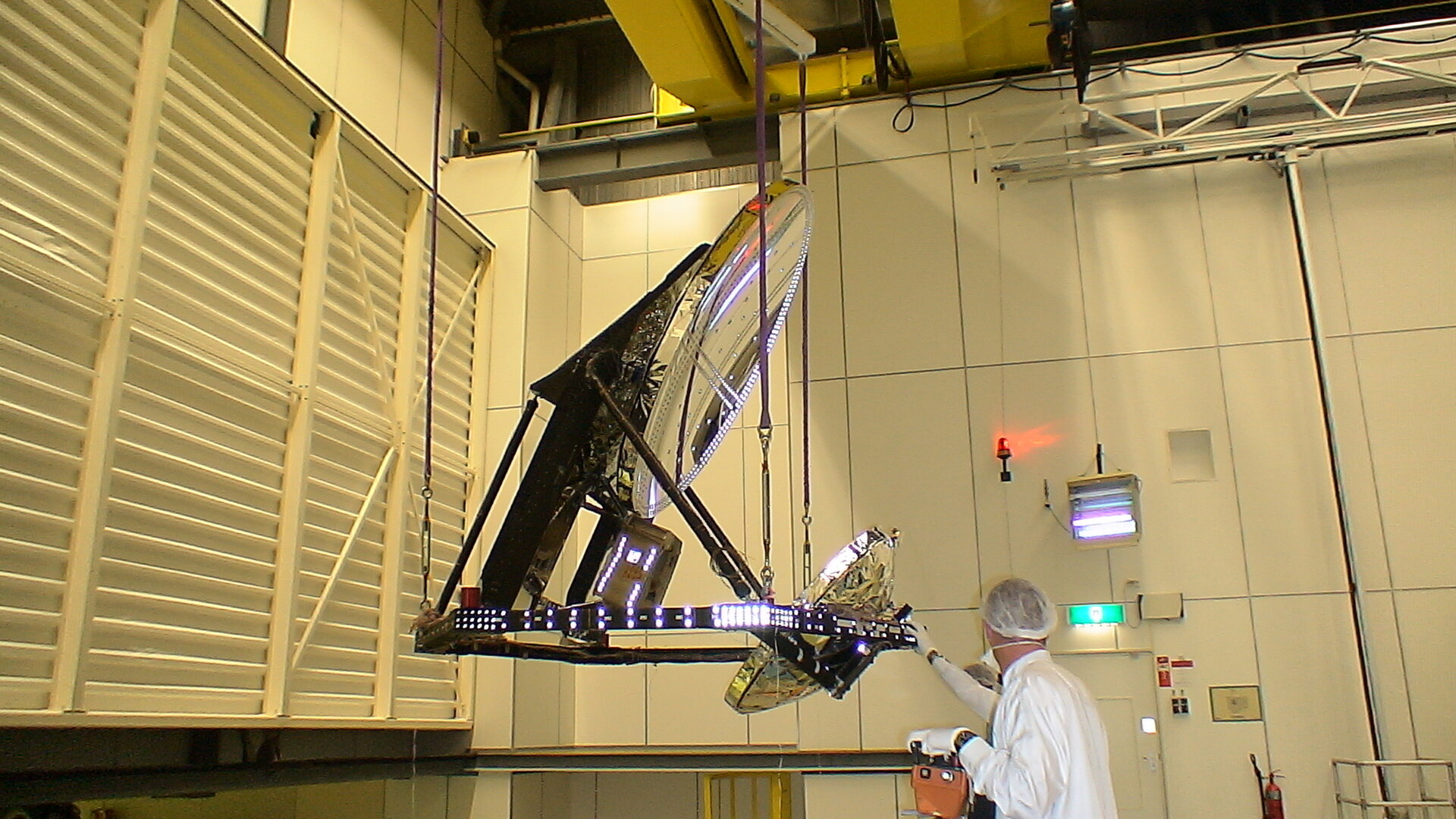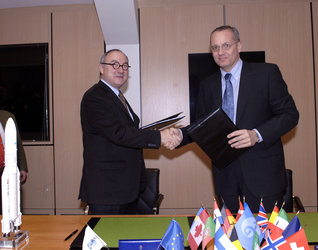Planck telescope behaves well in cold vacuum
ESA's Planck space telescope was removed last week from the Large Space Simulator (LSS) at ESTEC, ESA's research and technology centre in Noordwijk, the Netherlands, after a thorough two-week test in temperatures down to -178 degrees Celsius. The test is an important milestone towards launch in 2008.
Once in space, Planck will investigate cosmic background radiation: the remnants of the Big Bang over fourteen billion years ago. The telescope will make observations in the far-infrared spectrum; this can only be achieved using super-cooled instruments. It is essential to test the telescope at very low temperatures – a task highly suited to ESA’s Large Space Simulator.
Cold vacuum
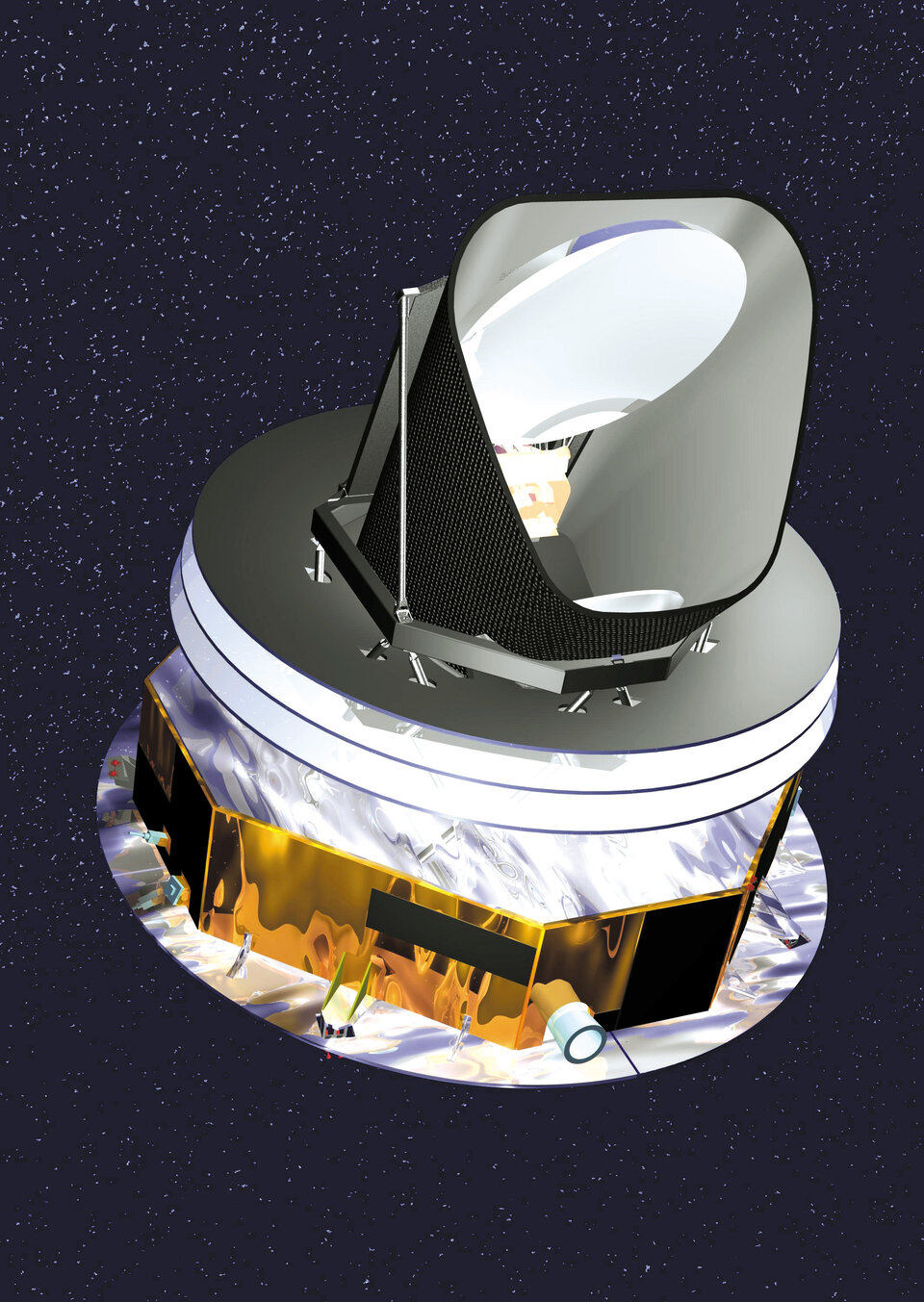
"Central to this test is exposure of the mirrors and their structural frame to a very cold vacuum", explains ESA scientist Philippe Kletzkine. "The telescope is built at room temperature and then cooled to way below the freezing point. Even though the materials were chosen carefully, this makes each individual component of the telescope shrink to some small but not negligible extent. We need to know whether the resulting changes in shape match our predictions. We have to be spot on, so the mirrors line up properly."
Videogrammetry is used to get a clearer picture of the changes in shape. Thousands of photographs, taken from many different angles, are used to build up a three-dimensional image of the mirrors, their structural frame and the place where the telescope’s cameras will be mounted. This process is repeated at several temperatures.
Arithmetic
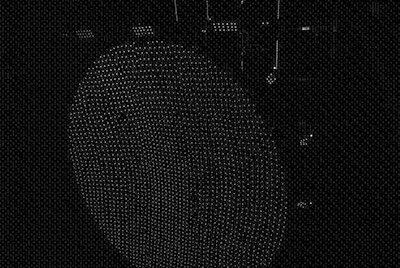
The telescope has been returned to a cleanroom at ESTEC. This completes the hands-on part of the measurement – now it is time for some arithmetic. Kletzkine: "Over the next few weeks we will be busy interpreting the test results. According to our first impressions the telescope has behaved well."
Earlier this year, Planck's mirrors were tested individually without the telescope structural frame at Alcatel, in Cannes, France. The results of their videogrammetry tests met expectations. Alcatel Alenia Space France is Prime Contractor to ESA for the Planck spacecraft.
Preparations for the mission continue at ESTEC. All the components needed to complete the spacecraft will be delivered and tested together in the coming months. Eventually the flight model will undergo vibration testing, acoustic testing, high and low temperature testing, as well as various tests of the computers and communications equipment on board.
Spinner
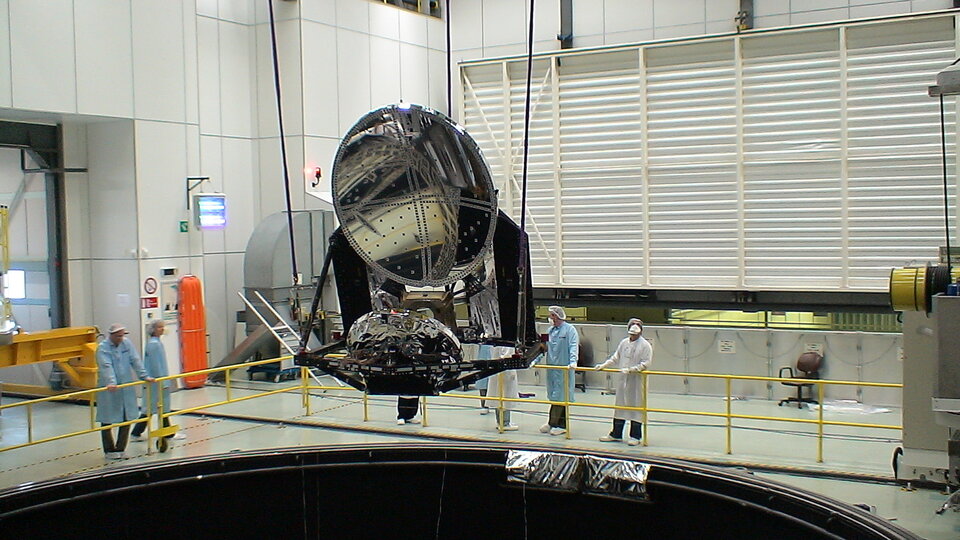
When the satellite is nearly completed, it will once again be placed in the Large Space Simulator. Planck is a so-called 'spinner', a satellite that rotates around its axis. New test runs in the LSS, again under vacuum but this time at normal room temperature, will check that the complete spacecraft is well balanced.
If everything goes to plan, at the end of 2007 Planck will pass its 'flight readiness review': a last step before proceeding with launch activities in 2008. Planck will be launched together with ESA’s Herschel spacecraft, itself an infra-red space telescope of a different kind, by ESA’s own Ariane-5 ECA heavy-lift launch vehicle.


